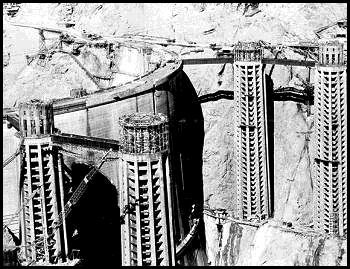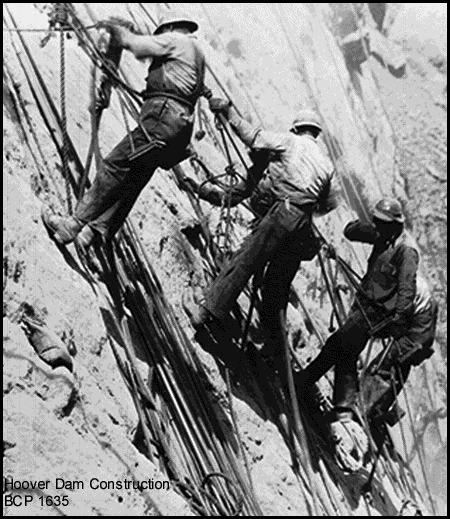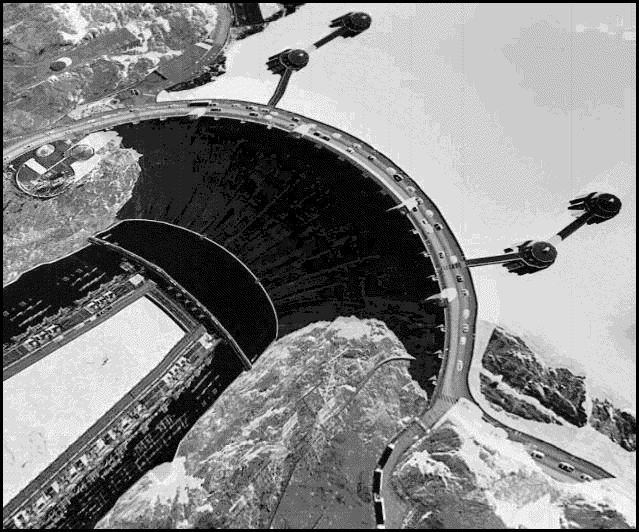The Making of Modern Nevada
Hal K. Rothman
(University of Nevada)

Sin? Sin arrived in Nevada, a virgin birth, perhaps, because no one else would have it. At first it was not so much gambling as boxing and divorce. People who wanted to get away from their mates were penalized by being forced to wait a year or two --- if not forever --- in their home states. Nevada was the only state to welcome divorcees to its bleak deserts and gambling huts and boxing matches. It reduced the time of penance at first to three months ... later to six weeks.
All this made the state a pariah: amidst the sagebrush, dust and desert you could watch Robert Fitzsimmons pound Gentleman Jim Corbett in Carson City while you wasted your money at roulette tables waiting to get unhitched from that jerk from Baltimore you had married on a drunken whim.

The dam "symbolized the combination of hubris and ability to conquer nature that was central to the American attitude about deserts, and it illustrated the complicated colonial position of Nevada."
- The decision to locate the dam in the narrows of Black Canyon inaugurated a fifteen-year pattern of federal dominance in the state economy and set the tone for the subsequent use of the state as a testing ground for atomic weapons.
The federal government ran the show; the state of California --- especially the black hole that became Los Angeles --- benefited the most. (California got 4,400,000 acre feet of water a year; Nevada 300,000.) For those of us who have continually lost our asses in Nevada, it is good to know that the state lost some too: the rich San Francisco banks came from the mines of Nevada; the water that allowed southern California to bloom (and wash their cars) came out of the corpse of the Colorado River.
Rothman has written a carefully-paced book, which contains occasional surprises: Boulder Dam was not a bloodless enterprise --- 240 men died in building it, "actually higher when work related illness was included;" Las Vegas was mostly a union-friendly town because manpower, until very recently, was always in short supply; the main task of those who ran the show in Las Vegas was to change the word "gambling" to "gaming," and make sin over into something new ... namely, "recreation."
Rothman is not an infelicitous writer, but his use of the word "visitation" can get on one's nerves. In this word, those of us who grew up under the aegis of the Great Mother Church have the image of the godhead as a pigeon conjoined with the Holy Mother. To Rothman, it represents the millions who come to lose their asses at the Excalibur, the Bellagio, Venetian, viz., "The Mirage Phase ... was followed by the Venetian and Paris Las Vegas, assuring strong visitation and full coffers." Emphasis ours, showing two interesting variants of the very same word.
